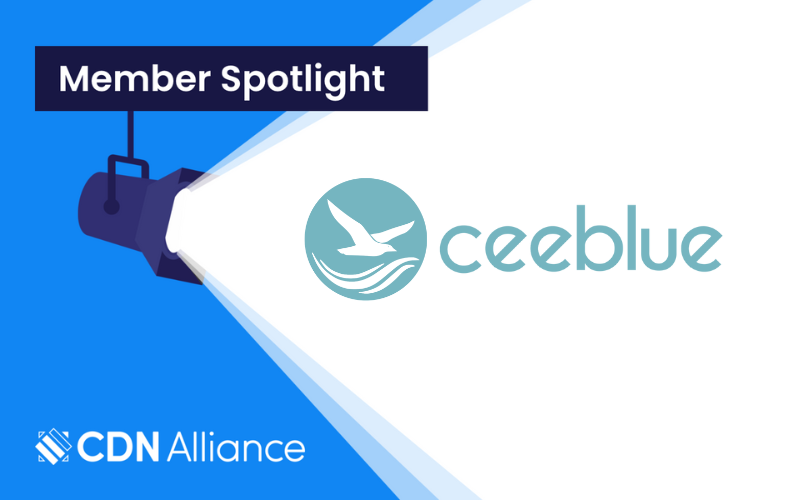1. What inspired you to join the CDN Alliance? What special benefits or values did you like in becoming a member?
As a founding member of the CDN Alliance, we at Ceeblue are proud to belong and contribute to an organization that strives to make a positive difference in the industry.
Some of the challenges Ceeblue faces on a daily basis are being addressed by CDN Alliance initiatives. For example: the Alliance’s efforts to create a consensus and to standardize low latency terminologies, while at the same time educating the market regarding the low latency technologies that are currently available, which are of great benefit to all.
Despite the fact that many low-latency technologies have been available for over a decade, CDNs and customers alike are still working with either incorrect or outdated information regarding what value the different low-latency options can provide and what real-world latencies are actually achievable.
For example, there is a relatively new real-time HTTP-based protocol called HESP, which every CDN could ostensibly support in order to address the market demand for real-time delivery. However, only two traditional CDNs have joined the HESP Alliance to date.
Ceeblue has defined a low-effort path that allows nearly any CDN to be able to cache and deliver this novel protocol with extremely low latency, but most are still unaware that this possibility exists.
There may be many underlying reasons for this, but we at Ceeblue feel that our vast protocol and network expertise will help the CDN Alliance’s efforts to bridge the gap between real-time streaming providers and CDNs.
By promoting transparency, clear communication and standardization, the CDN Alliance is helping to accelerate the adoption of new protocols, thereby expanding the real-time streaming market.
2. In your view, what’s the biggest challenge the CDN industry is currently facing? Whether it’s about how we do business, the tech we use, or the rules we follow. How do you see your work with the CDN Alliance playing a role in tackling this challenge?
As a mature tech industry, that has already seen considerable consolidation, we can’t say that we are surprised to see that CDNs are taking a slow approach to attacking the real-time market. CDNs may be unaware of the latest developments or are perhaps being overly cautious, with a wait-and-see approach.
As members of the CDN Alliance, and co-chairs of the Low-Latency Workgroup, our intent is to drive the crucial task of advancing awareness of low-latency offerings by fostering collaboration among industry stakeholders. This includes advocating for industry-wide standardization of low-latency terminology and sharing best practices for deployment.
Moreover, the CDN Alliance can help in educating and informing members about emerging technologies and business models, potentially driving innovation through workshops, whitepapers, and conferences that bring together experts from various domains within the CDN ecosystem. Such collaborative efforts can help the industry not only to navigate these challenges but also to harness opportunities for growth and innovation.
3. Could you explain the biggest challenge your products or services solve and how solving that challenge contributes to a better CDN Industry?
HLS/DASH streaming is a mature technology, with low-latency variants, but it does not address the needs of customers that require sub-second end-to-end streaming.
Ceeblue provides a specialty real-time CDN that can handle the particular requirements of WebRTC streaming as well as HESP, but we are also partnering with traditional CDNs so that they, too, can deliver HTTP-based HESP real-time video.
By supporting novel protocols, and by partnering with innovative streaming providers, CDNs can deliver interactive real-time content like iGaming, Sports Betting, Live Auctions, etc., with sub-500ms latency.
About:
Ceeblue specializes in live video streaming and is based in the Netherlands. We provide transcoding services for broadcasters and streaming companies alike, although we are most well-known for our transcoding + ultra-low latency delivery services.
Ceeblue’s video and streaming savvy is complemented by decades of network engineering experience. This allows us to provide very efficient and low-latency live streaming at the highest quality and with failback protocols in place.
By designing the delivery infrastructure to use independent nodes, we can provide incredibly reliable service worldwide with the lowest latency possible at scale, with unlimited viewership.
